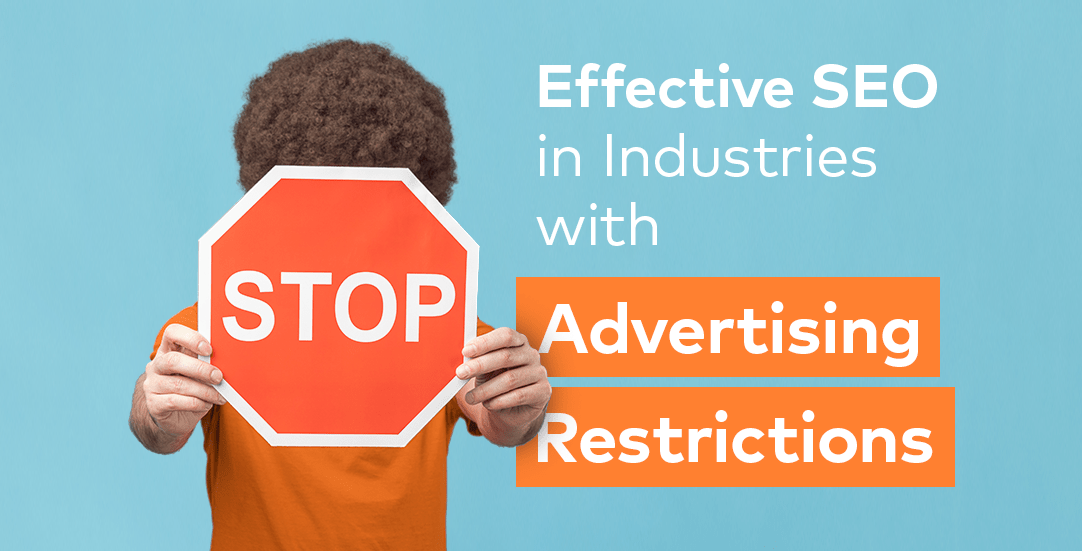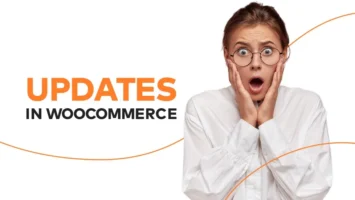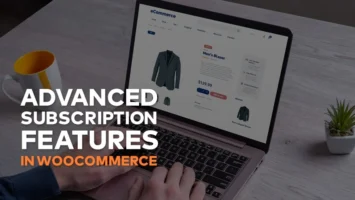Online visibility in industries with increased advertising restrictions

Visibility of brands online in the complexities of legal constraints, industry restrictions, and high competition environments might seem like a challenge, but it doesn’t have to be if we remember the key elements and avoid a cookie-cutter approach to marketing.
When thinking of industries with restrictions, we often think of gambling, but we must also consider the entire pharmaceutical sector, veterinary services, cryptocurrencies, political content, weapons, and many others.
In this article, we’ll focus on two key aspects of operating in industries with increased advertising restrictions: SEO and content marketing. Faced with strict advertising regulations, companies must seek alternative methods to reach and engage their target audiences.
Here’s how to achieve your goals without wasting advertising budgets, what to focus on, and alternatives to traditional advertising activities.
The Iceberg Strategy – business strategy and operational activities
Effective operational marketing activities in any industry, especially in “challenging” ones, must stem from the brand’s strategy, business strategy, and platform vision. Only on solid strategic foundations can we create a detailed marketing plan that includes budgets, key performance indicators (KPIs), and roadmaps.
Foundations provided by brand, business strategy, and platform vision
- Brand strategy -it should define the brand’s identity, the values it represents, and its unique features. Based on this, marketing messages are crafted.
- Business strategy – it should outline long-term business goals and ways to achieve them. SEO and content marketing activities must support these goals.
- Platform vision – it includes plans for website development, its functionalities, and the way content is presented.
Developing the marketing plan
At this stage, we move on to specific operational activities. The marketing plan should include a detailed budget breakdown, KPIs, and roadmaps for marketing actions. It specifies what actions will be taken, when, and what results they are expected to bring.
High-Level
We know what we want to achieve, where we want to be visible, can identify our target groups, markets, and key business elements (platforms, games, products, services). We know which elements of our offer will interest specific target groups.
Low-Level
We can identify important keywords and portals, and set realistic goals that, when achieved, will be deemed successful by our clients.
Achievements for our clients with this tactic
- iGaming – a top 5 rank for “online casino” in Google DE for over half a year,
- non-governmental organization – during our cooperation, the Client – whose activity aims at raising awareness on the subject of human trafficking – conducted a campaign with the goal of indicating how the development of internet pornography is connected to human trafficking. We were able to place the Client’s articles in the top 10 of search, results pages for key phrases related to “pornhub”,
- sport betting – during our cooperation we’ve gained more keywords in TOP10 and got significantly more traffic from non-branded keywords with high competition level such as “zaklady bukmacherskie” (sports betting) position 14 > 9, “bukmacher” (bookmaker) position 36 > 9 (as for june 2024). Thanks to keyword analysis we developed new sport-related content which allowed us to get very high positions on our sport blog, e.g. “liczba goli 1.5 co to znaczy” (goals over 1.5 what does it mean) position 0>3, “gole powyżej 1.5” (goals over 1.5) position 0 > 1,
- highly competitive industry (IT) – our goal was not to maintain traffic on the website after migration, but to increase the traffic, review external links and to leave only valuable links that generate both views as well as traffic. Within two weeks after completing the migration of the entire platform, organic traffic on the site increased by 25% when compared to the same period before migration.
Effective SEO in industries with advertising restrictions
SEO can no longer be separated from PR, image-building, and substantive actions. Synergy of content and strategic thinking about created and promoted content, using internal linking and brand image is necessary. Below we present some elements that support the classic approach to SEO and content marketing.
Content optimization – Creating valuable content
Invest in creating high-quality articles, blogs, and guides that address the questions and needs of your target audience. Educational content, tutorials, and case studies can attract organic traffic and build brand trust.
Keywords
Conduct thorough keyword research and focus on long-tail keywords that may be less competitive yet precisely target your niche. In the first instance, it is advisable to analyze your competition to understand which keywords they are targeting and how effective their strategy is. This will give you insights into gaps you can exploit and opportunities to tailor your content more effectively.
By focusing on long-tail keywords, you can hone in on specific user intents and attract a more targeted audience. Although these keywords may have lower search volumes, they often result in higher conversion rates because they closely match what potential customers are searching for. Use tools like Google Keyword Planner, Ahrefs, or SEMrush to identify these valuable keywords.
Incorporate these keywords naturally into your content, meta descriptions, and headings to improve your SEO. This approach will not only enhance your online visibility but also establish your authority in your niche, driving more relevant organic traffic to your site. Consistent optimization will help you compete more effectively and attract a loyal audience.
Headline SEO optimization
In the world of digital content, headlines are more than just the title of your article. They are critical elements that can significantly influence your site’s search engine optimization (SEO) and overall user engagement.
Optimizing your headlines is crucial for several reasons:
- improved search visibility – search engines use headlines to understand the context and relevance of your content,
- enhanced user experience – clear and informative headlines help readers navigate through your content more effectively.
Role of H1 in SEO
The H1 tag is the most important headline on your page. It should provide a concise summary of your content and contain the primary keyword you are targeting.
Best practices for H1 tags:
- use only one H1 tag per page,
- there shouldn’t be any headings in code above H1,
- make it descriptive and relevant to your content,
- keep it between 40-60 characters with spaces.
The H2 tag
H2 tags serve as subheadings that break down your content into digestible sections. They help search engines understand the hierarchy and structure of your content.
How to effectively use H2 tags:
- use keywords naturally within your H2 tags,
- ensure each H2 tag introduces a new section,
- keep them clear and concise,
- keep it between 40-60 characters with spaces.
The H3 tag
H3 tags are used to further divide the content under H2 sections. They provide additional granularity and help in organizing detailed information.
How to effectively use H3 tags:
- breaking down subtopics under an H2 heading,
- highlighting key points or steps in a process,
- keep it between 40-60 characters with spaces.
The H4 tag
H4 tags are less commonly used but are useful for detailing points under H3 tags. They add another layer of depth to your content structure.
Benefits of using H4 tags
- enhance content clarity,
- help in organizing complex information,
- keep it between 40-60 characters with spaces.
Example of headlines structure
H1
H2
H2
H3
H3
H3
H2
H2
H3
H3
H4
H4
H3
H2
Link building – collaboration with industry portals
Look for opportunities to publish guest articles on trusted portals related to your industry. By contributing valuable content to these established websites, you can reach a broader audience and showcase your expertise. Guest posting not only helps in building relationships with key influencers but also allows you to tap into their audience base. The backlinks from these high-authority sites will significantly increase your website’s authority and improve its search engine ranking. This strategy will also drive referral traffic to your site, potentially converting readers into customers. Ensure that the content is relevant and provides real value to the readers, as this will enhance your credibility and trustworthiness within the industry.
Profiles in industry directories
Register your business in trusted industry directories, which will not only improve visibility but also provide valuable backlinks. Being listed in well-regarded directories enhances your credibility and authority within your industry, making it easier for potential customers to find you.
On-Site SEO
Technical SEO involves optimizing your website’s infrastructure to help search engines crawl and index your site more effectively:
- Website speed optimization – improve your website’s loading speed by compressing images, leveraging browser caching, minimizing JavaScript and CSS etc. You can check your website’s score on Google PageSpeed Insights.
- Mobile friendliness – ensure that your website is fully responsive and offers a seamless experience on all devices. Use Google’s Mobile-Friendly Test to identify and fix issues.
- XML sitemaps – create and submit an XML sitemap to search engines to help them understand your site’s structure and easily find all your pages.
- Robots.txt file – use the robots.txt file to guide search engines on which pages to crawl and index, and which to avoid.
- Structured Data Markup – implement structured data markup to help search engines understand the content on your pages better. This can also enhance your search results with rich snippets.
- URL structure – use clean and descriptive URLs that include relevant keywords and avoid characters that are difficult to read by both users and search engines.
- SSL certificate – secure your website with HTTPS by installing an SSL certificate. This not only helps with rankings but also builds trust with your audience.
- Canonical tags – use canonical tags to prevent duplicate content issues by specifying the preferred version of a webpage.
- 404 error pages – create custom 404 error pages to provide helpful navigation links and keep users on your site.
- Breadcrumb navigation – implement breadcrumb navigation to improve site usability and allow both users and search engines to understand the site’s hierarchy.
- Internal linking – use internal linking to connect related content, improve site navigation, and distribute page authority across your website.
- Image optimization – optimize images using descriptive filenames, alt text, and compressing file sizes to ensure faster loading times and better accessibility.
- CDN – ensure your website loads quickly on all devices by optimizing images and using technologies such as CDN.
Operational SEO and Content Marketing Activities
At this level are activities such as content creation, website design, and paid links. It’s important that they result from prior analysis and strategy, not ad hoc actions without data. Links and content should be the result of strategic data and information, not a “yolo” approach without data support. Only such an approach ensures the coherence of marketing activities and their effectiveness in the long term.
In summary, effective SEO actions in industries with advertising restrictions require creativity and a strategic approach. By investing in valuable content, personalization, and customer interaction, significant results can be achieved even in challenging market conditions.


















